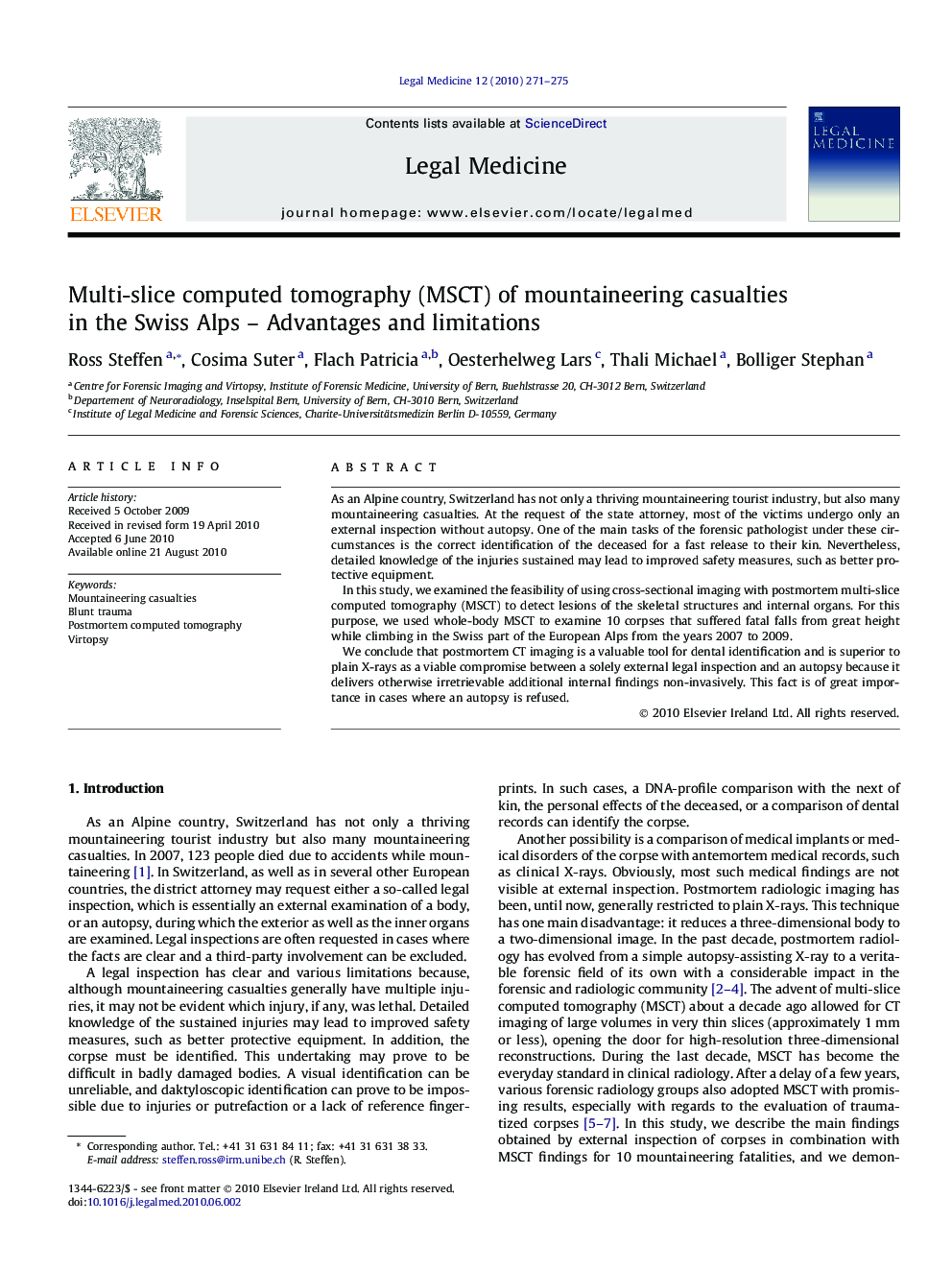| Article ID | Journal | Published Year | Pages | File Type |
|---|---|---|---|---|
| 103846 | Legal Medicine | 2010 | 5 Pages |
As an Alpine country, Switzerland has not only a thriving mountaineering tourist industry, but also many mountaineering casualties. At the request of the state attorney, most of the victims undergo only an external inspection without autopsy. One of the main tasks of the forensic pathologist under these circumstances is the correct identification of the deceased for a fast release to their kin. Nevertheless, detailed knowledge of the injuries sustained may lead to improved safety measures, such as better protective equipment.In this study, we examined the feasibility of using cross-sectional imaging with postmortem multi-slice computed tomography (MSCT) to detect lesions of the skeletal structures and internal organs. For this purpose, we used whole-body MSCT to examine 10 corpses that suffered fatal falls from great height while climbing in the Swiss part of the European Alps from the years 2007 to 2009.We conclude that postmortem CT imaging is a valuable tool for dental identification and is superior to plain X-rays as a viable compromise between a solely external legal inspection and an autopsy because it delivers otherwise irretrievable additional internal findings non-invasively. This fact is of great importance in cases where an autopsy is refused.
